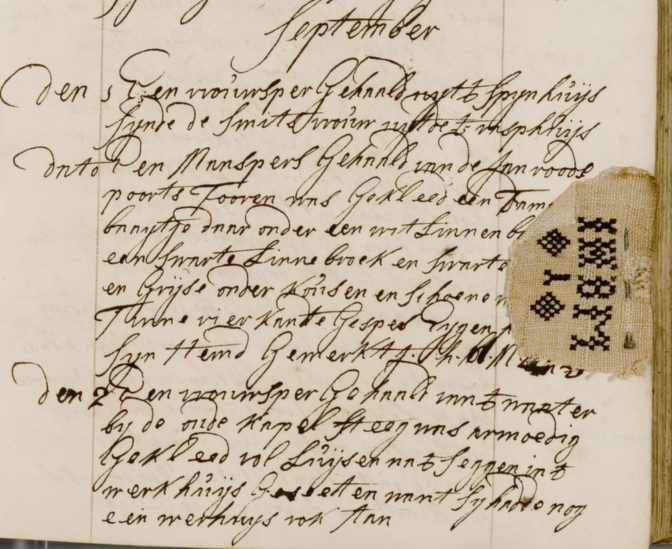A haaldode is a dead person that was retrieved. I have only ever seen the word used in Amsterdam records, but it may have been used elsewhere as well.
In Amsterdam, a lot of people were living in poverty by the end of the 1700s. People died in the streets or drowned in the canals. Their bodies were retrieved and brought for inspection to a hospital at the Overtoom. They were recorded in a special register of haaldoden. If their identity was unknown, the record would include a description of the deceased and the clothes he was wearing. Many people wore monogrammed clothes, and the monogram would be cut out and pinned to the register, in the hopes that family members who came to enquire after a loved one would recognize the fabric and be able to identify the body even after it had been buried.
Amsterdam kept separate registers of haaldoden from 1777 to 1811. They have been scanned and can be accessed at the Amsterdam City Archives website.
Source


